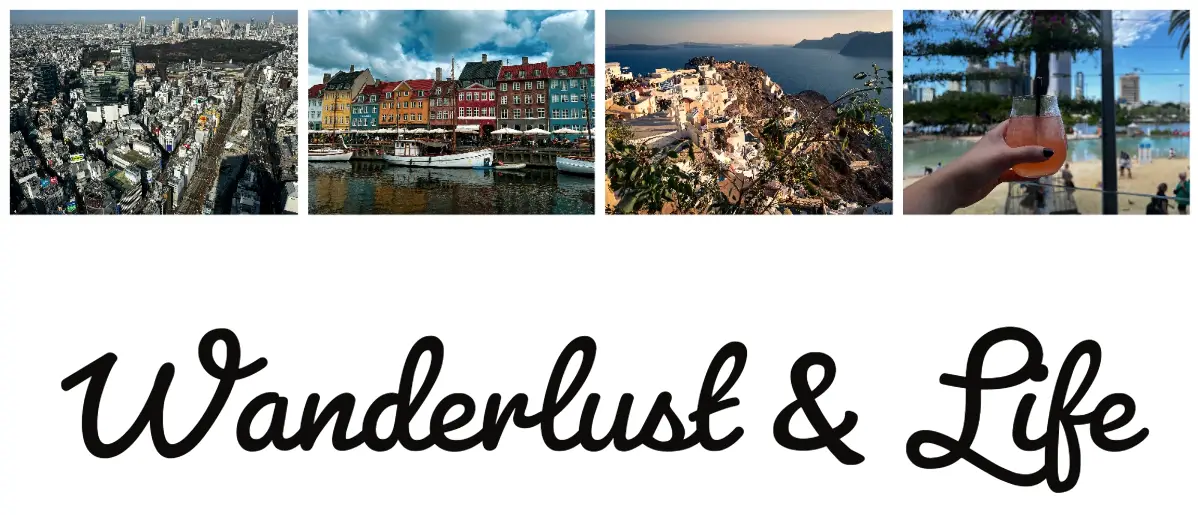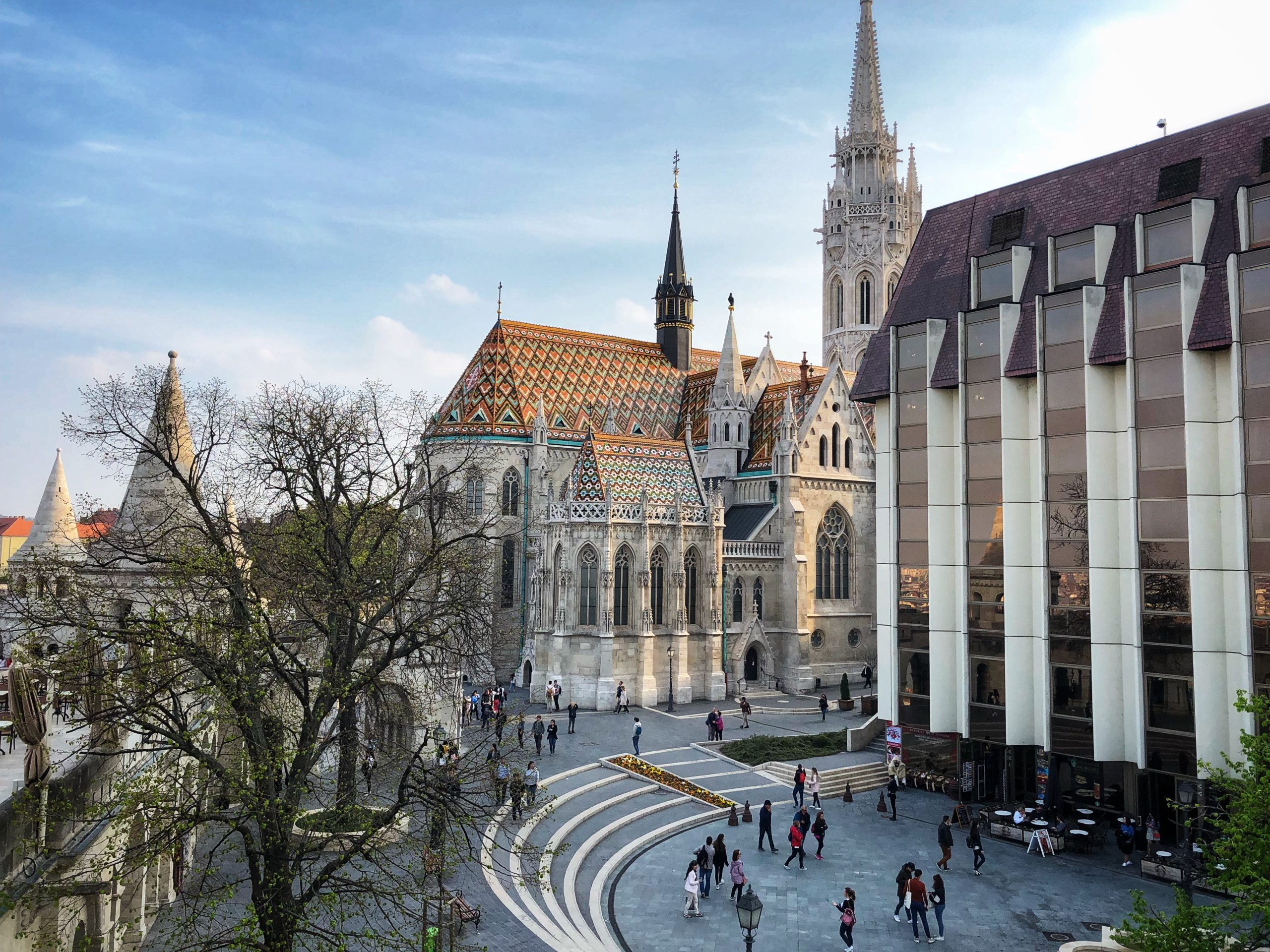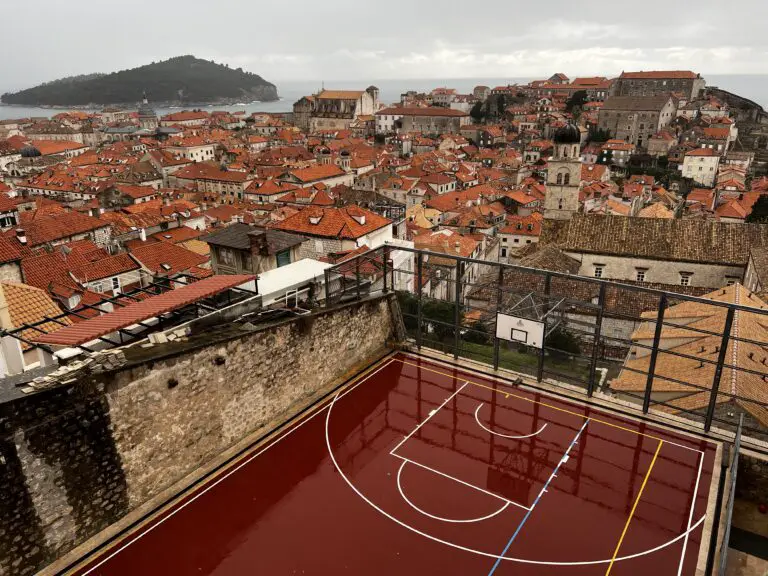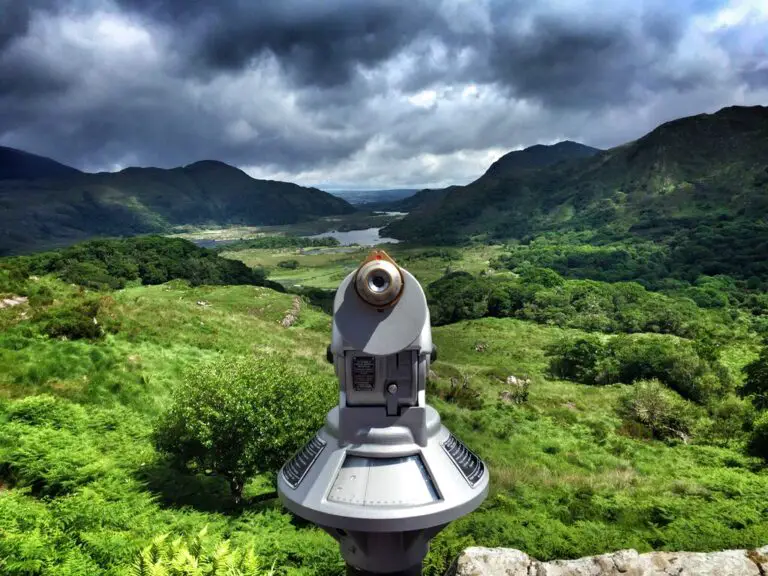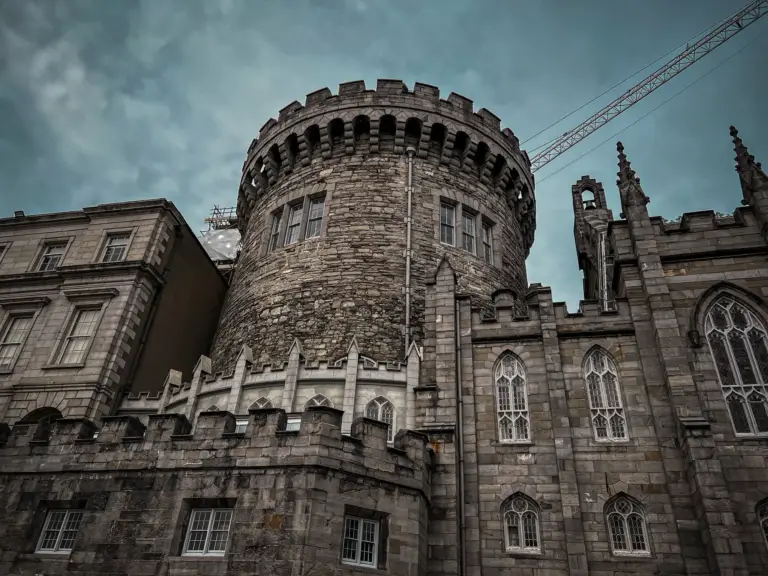Planning the perfect Prague, Vienna, Budapest itinerary for a 7 & 10 day break
If you are planning on spending a week in Europe, then we highly recommend visiting the Imperial capitals of Prague, Vienna, & Budapest. Each city is steeped in history, with grandiose architecture, mouth watering food, and a whole lot of culture. On top of that each of the capitals bring something a little different to the table so you get a real taste of Europe in a limited time.
Here we have put together the perfect Prague, Vienna, Budapest itinerary to help you plan your own European adventure. This guide includes all the information you need on getting between each city, and what to do when you get there.
Disclaimer: This post contains affiliate links, so if you use these links to buy something we may earn a commission, at no cost to you. Thank you for your support.

Contents
- Why plan a Prague, Vienna, Budapest itinerary?
- Prague, Vienna, Budapest – how many days
- Prague, Vienna, Budapest – where to start
- Prague, Vienna, Budapest itinerary breakdown
- Prague Itinerary
- How long do you need in Prague
- Where to stay in Prague
- Things to do in Prague
- Eating and drinking in Prague
- Getting around Prague
- Vienna Itinerary
- How long do you need in Vienna
- Where to stay in Vienna
- Things to do in Vienna
- Eating and drinking in Vienna
- Getting Around Vienna
- Budapest Itinerary
- How long do you need in Budapest
- Where to stay in Budapest
- Things to do in Budapest
- Eating and drinking in Budapest
- Getting around Budapest
- Sample Prague, Vienna, Budapest 7 day itinerary
- Sample Prague, Vienna, Budapest 10 day itinerary
- Travelling between Prague, Vienna, & Budapest
- Best time of year to plan your Prague, Vienna, Budapest itinerary
- How much money do I need for my Prague, Vienna, Budapest itinerary?
- Prague, Vienna, Budapest itinerary and travel tips
- Prague, Vienna, Budapest FAQs
- Prague, Vienna, Budapest itinerary – which one is better for families
- Prague, Vienna, Budapest itinerary – which one is better for couples
- Prague, Vienna, Budapest itinerary – which one is better for solo travellers
- Prague, Vienna, Budapest itinerary – which one is better for budget travellers
- Prague, Vienna, Budapest itinerary – which one is better for history lovers
- Prague, Vienna, Budapest itinerary – which one is better for culture
- Prague, Vienna, Budapest itinerary – which one is better for nightlife
- So should I plan a Prague, Vienna, Budapest itinerary?
Why plan a Prague, Vienna, Budapest itinerary?
You might be wondering why you should plan a Prague, Vienna, Budapest itinerary when there are so many amazing places in Europe. Whilst that is true, Prague, Vienna, and Budapest are becoming European hotspots for travellers. One of the things that I’m drawn to with these cities is that their identities have been shaped by both Eastern European and Western European influences.
They are also quite a bit cheaper than their Western counterparts like Paris or Rome, which lets be honest in this economic climate is never a bad thing.
If you are tossing up between Prague or Budapest here is a helpful guide.
Or if you are trying to decide between Vienna or Budapest here is a helpful guide.
Prague, Vienna, Budapest – how many days
In our Prague, Vienna, Budapest guide we give you 2 example itineraries for a 7 day and 10 day trip. Obviously the longer you have in each city, the better. Each of them offer so much to see and do. If you only have 7 days we recommend 2 days in each city with a 7th day for travelling. And if you have a little bit longer 3 days in each plus a day of travel gives you a good chance to see the sights and get a taste of each city.
Of course we recommend spending much longer in Europe, especially because it is so big and each country is so unique. For more ideas, here are some sample 3 week Central Europe itineraries to give you some ideas.
Prague, Vienna, Budapest – where to start
So when planning a Prague Vienna Budapest itinerary, you might be wondering where on earth to start. The logical thing to do is either start in Prague, or Budapest. That way you can travel south from Prague or north from Budapest. Vienna is wedged between the other two destinations so it’s not an ideal place to start unless you want to go back on yourself.
Flying into Prague
If you decide the fly into Prague to start your Prague, Vienna, Budapest itinerary here, then you are in luck. It’s a very busy airport and a lot of European carriers including low budget carriers like Ryanair and Easyjet fly here.
Once you arrive at the airport we recommend getting a taxi because it is the easiest way to get to your hotel/ centre of Prague. It will take about 30-45 minutes in total and set you back around €30/736 CZK.
There are cheaper options but these do involve a bit of faffing around. For instance there is a bus however this will only take you to one of the city metro lines, where you will need to make your way into the centre from there.
There is also bus 119, which is every 15 minutes. If you are trying to get to the Old Town you can get this to Nádraží Veleslavín metrostation, and then its a further 6 stops on the metro to old town.
For the new town get bus 100. This stops at Zličín metro station on line B. From here you are looking at about 11 stops to the centre.
Despite the buses being a little bit of effort they only costs 1.20€ or 32 CZK, so this is a good option for those trying to do Prague on a budget.
Flying into Budapest
If you have decided to go down the Budapest, Vienna, Prague route, then chances are your trip will start at Budapest Ferenc Liszt International Airport. This is the city’s main airport. From here you can either get a bus or taxi.
A taxi is the most direct and honestly the easiest way to get from the airport to your hotel. It will cost around €30 each way, but saves you traipsing around with all that luggage.
Alternatively you can get the bus – the 100E which will get you into town in around 30-40minutes.
Prague, Vienna, Budapest itinerary breakdown
Here is our Prague, Vienna, Budapest itinerary breakdown including the best things to see and do in each of the cities. For the purpose of this itinerary we are starting in Prague.
Prague Itinerary
Prague is by far one of our favourite destinations. It’s literally like walking into a fairytale with castles and cobbled streets. It is the perfect city to start your Prague, Vienna, & Budapest itinerary, but be warned you may never want to leave.
You can read more about our trip to Prague here if you want. Otherwise read on for our Prague highlights.
And if you are wondering if Prague is worth visiting this article might help.
In the meantime here is some information on Prague.
Country: Czech Republic
Languages Spoken: Czech but English is widely spoken
Currency: Czech Koruna (CZK)
Famous for: Old world architecture, it’s many spires, culture, and excellent beer
Visit if you like: City breaks with history, and really beautiful places
Nickname: The City of a Hundred Spires

How long do you need in Prague
When visiting Prague you probably want somewhere between 2 days at a minimum to around 4 days to really get to grips with the city.
It is one of those cities that is best enjoyed at a slower pace, wandering the cobbled streets stopping every now and then for a drink. The good news is, a lot of the man tourist attractions are pretty close together, so you won’t spend ages travelling between sights.
Obviously if you are trying to see Prague, Vienna, and Budapest you probably won’t have a long time to spend in each spot. So book any must do tours well in advance to make the most of your time.
Where to stay in Prague
You will find accommodation to fit any budget in Prague. If you only have a short time in the city though you want to be close to the key tourist attractions, particularly the Charles Bridge and Old Town. We opted for a mid-range hotel located right near the Charles Bridge called Lokal Inn. It was only a minutes walk from the bridge, and was close to lots of bars and restaurants.
Here is a breakdown on the best areas to stay in Prague to help you plan your own trip.
Old Town or Staré Město
The Old Town or Staré Město as it is known in Czech would probably be our recommendation especially for a short trip. It’s beautiful, and there are lots of food and drink options. It’s also close to a lot of the main attractions.
The downside is that it can be touristy, and you can fall into the trap of food and drink that isn’t very good and super expensive. Just do your research beforehand is what we would say.
Accommodation is also a bit pricier here, so book well in advance for the best deals.
Lesser Town or Mala Strana
Lesser Town, is our second recommendation for areas to stay in Prague. It’s just across the river from the Old Town, and it just that little bit quieter too. It’s a quaint area to explore, and is close to places like the Lennon Wall, and the Charles Bridge. There are a lot of restaurants and bars in the area, and it is close to public transport too.
New Town or Nové Město
The New Town, is great if you are wanting to go clubbing, and have some crazy nights out in Prague. It’s right next to the Old Town, so it is still pretty central. It’s also less touristy than the Old Town. If you want a more authentic Czech experience where you are mingling with the locals, this is a great area to stay.
The Castle District or Hradcany
The Castle District has some of the best views over Prague, and is obviously close to one of the main tourist attractions, the Prague Castle. It’s a little bit further out though from the Old Town, but still easily accessible. We probably wouldn’t recommend staying in the area when you only have a short time in Prague, just because it’s away from a lot of the hustle and bustle of the city.
Things to do in Prague
Here are some of our highlights and top things to do when visiting Prague.
John Lennon Wall
Probably one of the more instagrammable spots in Prague, the John Lennon Wall is a must on any visit to the city. Etched with graffiti that changes on a regular basis the wall is a symbol of political frustration but also freedom of speech. Make sure you get here early to avoid the crowds.
Prague Castle
The first thing we noticed in Prague was the spectacular castle perched above the city, almost watching over it. The castle grounds contain gardens, palaces, and shops as well as the very dramatic looking St Vitus Cathedral. The views over Prague from the castle are also pretty incredible!
You can purchase your tickets online in advance, or purchase them on the day on the castle grounds.
Charles Bridge
If you do one thing on your trip to Prague, make sure you visit the Charles Bridge at sunrise. It’s so much quieter and you get some really amazing photo opportunities. The bridge connects Mala Strana (Little Quarter) and Stare Mesto (The Old Town) so it is a very beautiful way to get from one side of the river to the other.
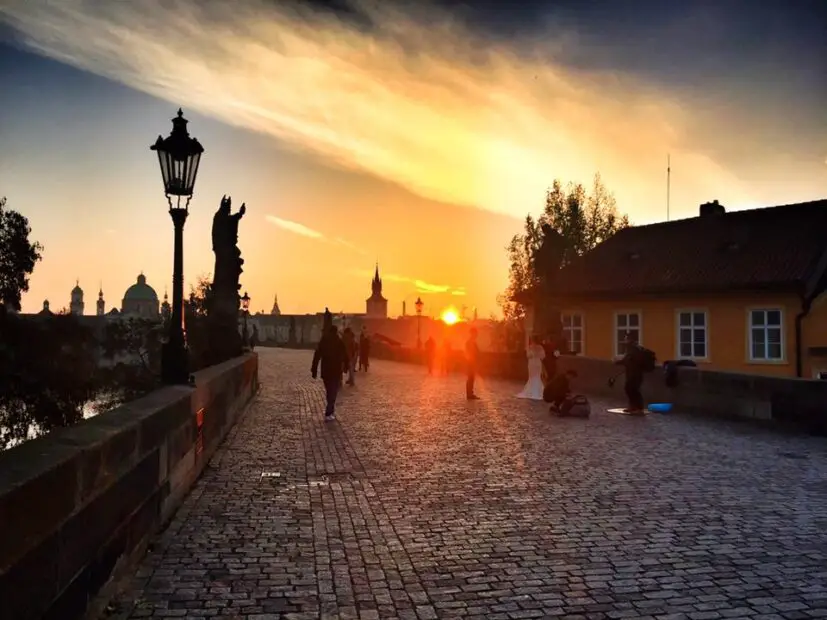
Petrin Hill
Petrin Hill provides a bit of a reprieve from the hustle and bustle of Old Town. Make sure you get the funicular up the hill, but remember to arrive early to beat the crowds. Once you are at the top of the hill you can stroll around the beautiful gardens and woodland, or if you are brave enough head up to the top of the TV Tower.
Jewish Museum
Whilst it is a sombre place to visit the Jewish Museum is one of the most visited museums in Prague. Here you learn about the history of the Jews in the city, and you get to explore the Old Jewish Cemetery too.
Go to a Beer Spa
One of the more unusual things to do in Prague has to be visiting the Beer Spa. I mean why bathe in water when you can bathe in Beer? You also get to sip on beer (don’t worry not the stuff you bathe in because that would be gross), and there is an option to have a massage as well. You can book your tickets online in advance here.
Vltava River Cruise
I always love seeing a city from the water, so the Vltava River cruise was a must on our visit to Prague. There are a number of different river cruises you can do and we’ve included some in the links below.
Old Town & Old Town Hall Tower
A visit to Old Town is a must in Prague. The Old Town Square is probably one of the most photogenic parts of the city. The Xmas markets are held here in December and at other times it is a hive of activity with street performers and vendors selling Chimney Cakes and other treats. If you have time it is worth visiting the Old Town Hall Tower for some really wonderful views.
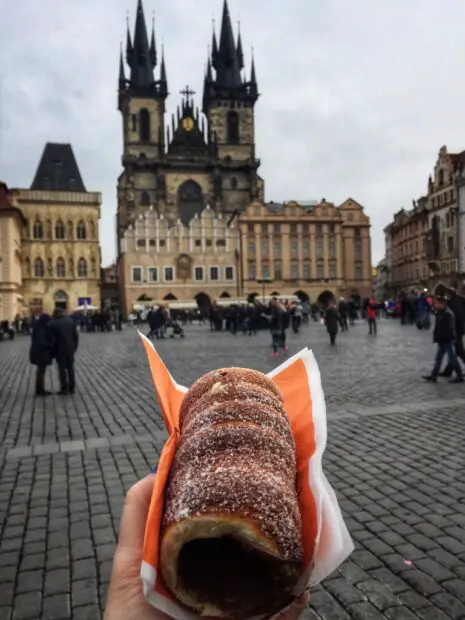
Dancing House
The Dancing House is one of the more modern sights in Prague. It’s apparently one of the most photographed modern buildings in the city, due to its quirky design. Basically it was designed to resemble a pair of dancers – hence the name.
It’s located in New Town, which is somewhere we didn’t spend a lot of time. There tends to be a high number of stag and hen dos in the area, so be warned.
St Nicholas’ Church
St Nicholas’ Church located in Mala Strana is a Baroque masterpiece that you really have to visit. The inside is adorned with impressive artwork and intricate carvings, so we recommend you make the time to visit.
It was built between 1704-1755 it is now a hugely popular tourist attraction in Prague. It is also considered one of the greatest examples of Prague Baroque architecture.
Eating and drinking in Prague
A HUGE part of any Prague, Vienna, Budapest itinerary, has to food. Prague is no exception! The food is out of this world. You might find some of the cuisine in the 3 cities to be a bit similar, but each city has their own take on it.
Trdelník or Chimney Cake, is a popular sweet treat in Prague. Its roots are actually Hungarian, but you won’t be able to escape Prague without chowing down on this pastry.
Goulash is also a popular dish in Prague. Again you will find this in Hungary as well but the texture is different. In Prague it is far more stew like and served with some delicious dumplings.
If you have the time we recommend a food tour like this one, that way you get a locals view on the best things to eat and drink in the city. Or if you want to try food and drink, then this tour covers both.
Whilst I am on the topic of drink, I think it is fair to stay that Prague is well known for its beer. Make sure you visit one of the traditional beer halls, U Zlatého tygra is one of our favourites, although it does get busy so get there early.
There are a number of beer tours you can do, especially if you really do like your pints, and our suggestions are below.
Getting around Prague
Prague is a very easy city to navigate and truth be told we spent most of our time just walking around it. That being said there were times when we had to take public transport, and you might too.
Public transport consists of buses, trams, and the metro. You will need to purchase your ticket before boarding ay form of transport. You can purchase tickets at newspaper kiosks or hotels.
Upon boarding validate your ticket. For example on the tram you can get a stamp near the door to validate it. Ticket types vary and you can get a single ticket (which includes a 30 minute transfer window) or a day pass.
And if you want to know what it’s like visiting Prague in autumn this article might be handy.
Vienna Itinerary
So now we head to our second destination on our Prague, Vienna, Budapest itinerary. Vienna is full of lavish architecture, museums, classical music, and of course coffee and cake.
You can read more about Vienna here.
Or if you are tossing up between Vienna and Prague here is a helpful guide.
In the meantime here are some facts.
Country: Austria
Languages Spoken: German (a lot of people speak English though)
Currency: Euro
Famous for: Food (wiener schnitzel), culture, music, and history
Visit if you like: Classical music, architecture, palaces, history and food
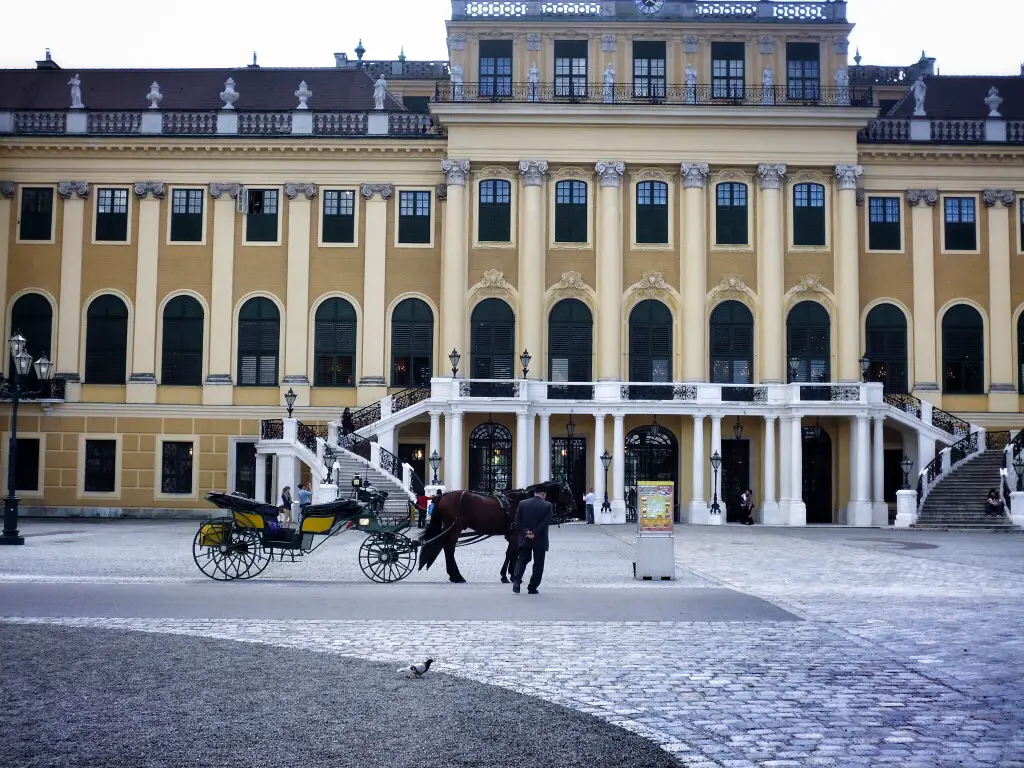
How long do you need in Vienna
Between Prague, Vienna, and Budapest our personal opinion is that you can probably get away with allocating the smallest amount of time in Vienna. Of course this advice is dependant on what you want to see, but we found that we would have like more time in Prague and Budapest, and would have been happy to compromise for less time in Vienna.
That isn’t to say Vienna isn’t worth visiting. It absolutely is. And you might want more time here especially if you are planning on visiting the museums (and there are lots of them) or even the vineyards.
All in all we would say you need somewhere between 2-3 days in Vienna. This will give you time to see some of the main sights, eat some great food, and of course sip a few drinks along the way.
Where to stay in Vienna
If you are in Vienna for a short time, like we were then you will want to stay somewhere central and close to the tourist attractions. Innere Stadt and MuseumsQuartier and probably the best areas to stay in for a first time visit. You are close to the attractions and there are a number of hotels to choose from for all budgets.
We ended up staying a bit further out when we visited which in hindsight wasn’t the brightest idea on such a short trip.
Here is a quick breakdown on the best neighbourhoods to stay in Vienna.
Innere Stadt (Dirstrict 1)
This is in the very centre of historic Vienna, and it is close to a lot of the main attractions like St Stephen’s and the Spanish Riding School.
Accommodation can be a bit more expensive here, but transport links are excellent. This is ideal for first time visitors or those with a small amount of time in the city.
Leopoldstadt (District 2)
Slightly cheaper and a little less touristy is District 2. You are still pretty close to a lot of the main attractions, and it’s very close to the Prater Amusement Park. This is good if you are looking for slightly cheaper accommodation but still want to be in the thick of it.
MuseumsQuartier (District 7)
This is perfect if you are a fan of culture and museums. There are a lot of bars and restaurants in the area, and this is probably a good choice if you do enjoy visiting bars in the evening as there is more here.
Things to do in Vienna
Here are some of our highlights when visiting Vienna.
Schonbrunn Palace
Schonbrunn Palace is one of the top attractions in Vienna, giving you a flavour of imperial living in the city. Built in the 1630’s this former summer residence for royalty is now popular with tourists. You get the opportunity to tour the inside as well as exploring the palace gardens. You can book tickets online in advance to avoid the queues on the day.
Hofburg Palace
It’s not a trip to Vienna unless you have visited at least one palace. Hofburg Palace is another great attraction. It was a winter residence for the rulers during the time of the Austro-Hungarian empire.
You do do some cool tours here including the museum or even the imperial apartments.
Visit a coffee house
A visit to a coffee house in Vienna is a must due to their part in shaping Viennese culture. Treat yourself to some coffee and cake (Sachertorte is the most traditional) and read the paper like the locals do. If you want to learn more about the coffee culture in Vienna, or experience it with a local here is a great tour you can book.
Prater amusement park
Open from March – October every year. the Prater amusement park is home to one of the oldest ferris wheels in the world. The Riesenrad, is 212 ft tall and has these wooden gondolas that you stand in as the wheel goes around. This is a highlight in Vienna for sure.
MuseumsQuartier
Like you would assume with the name, the MuseumsQuartier is home to a number of art museums, as well as an architecture and design museum.
Hundertwasserhaus
A quirky thing to see in Vienna is this colourful housing complex. It is a really unusual building built after an idea and concept by Austrian artist Friedensreich Hundertwasser, hence the name. If you are looking for an offbeat experience it is certainly worth a visit. And of course it is a great place to get a few Instagram shots.
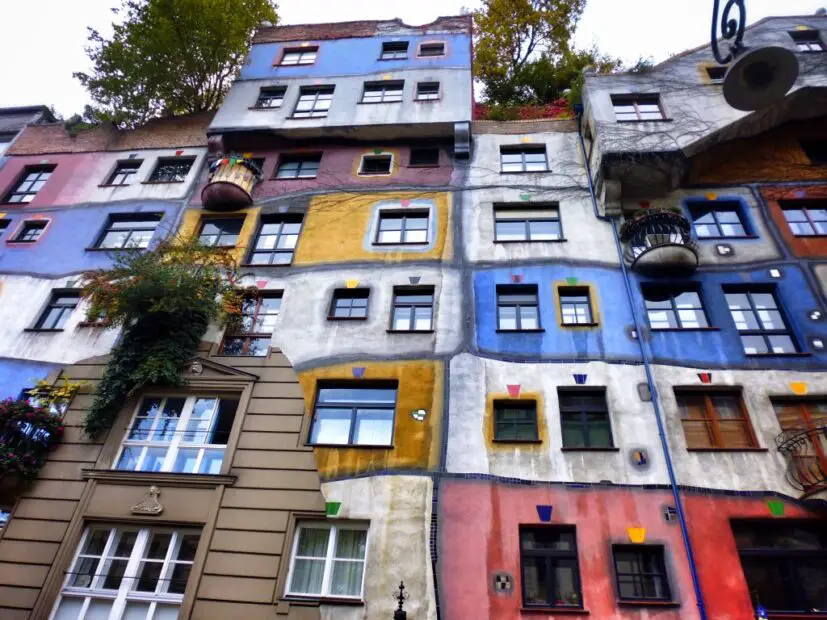
St Stephen’s Cathedral
Hailed as one of the most important religious buildings in Vienna. This gothic style cathedral is a Roman Catholic church with intricate detail. It is well worth a look and make sure you go inside if you can. We recommend this tour that gives you a glimpse of parts of the cathedral where the masses cannot enter.
Listen to some Opera
Vienna is renowned for its musical history so heading to an opera is high on the bucket list.
Rathaus
For a bit of history definitely consider visiting the Rathaus or Town Hall. It was constructed in the 1800s in a Neo-Gothic style to create more space for the city mayor. It’s a really beautiful building to visit, and gives off those opulent European vibes. If you want to go inside you can but only on certain days, and you have to book a specific tour.
The Vineyards
We had no idea there were vineyards in Vienna and this was a pleasant surprise. It is a bit of a journey out of town and you will need to take a bus to Kahlenburg. But it really is worth doing and a real quirky thing to do in Vienna.
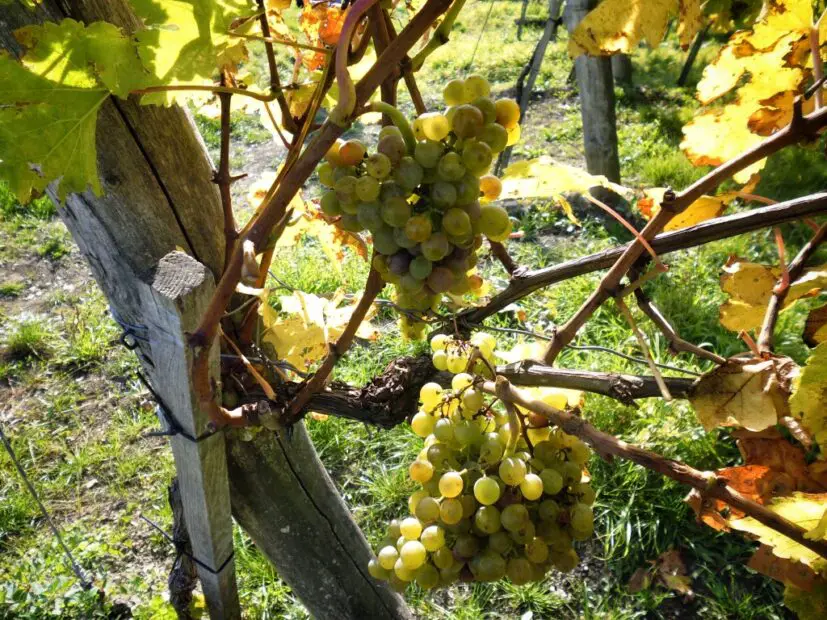
Spittelau waste incineration plant
Another really quirky thing to do is to visit Vienna’s waste incineration plant. Artist Friedensreich Hundertwasser, who also designed the apartment complex at the top of this list was tasked with designing the new plant.
You can do a tour of the plant which seems to be popular with school children who can learn all about the heating and cooling process. Even if that’s not your thing it will probably be the most beautiful waste incineration plant you will ever see.
Eating and drinking in Vienna
Vienna feels a little bit like the posher sister of Prague and Budapest sometimes, and the food and drink in the city also make it feel like this. But there are a number of culinary experiences for everyone whether you are looking for something fancy or more laid back.
When it comes to food, Schnitzel is a must in Vienna. And if you aren’t sure where to eat it then you can do this cruise and Schnitzel tour where you can enjoy the dish whilst gazing out at views of the city.
For something a bit more relaxed we recommend Naschmarkt. There is a food tour you can do that is highly recommended or you can just explore yourself.
Finally when it comes to drinks in Vienna, craft beer is a big deal, and you will find so many cute little bars serving beers in the most extraordinary glasses. Here is a tour you can do if you are a craft beer fan.
If you aren’t a beer lover though, never fear because wine is also something that Vienna prides itself on. You can visit the vineyards as mentioned above or just enjoy an underground wine tour.
And if you are wondering is Vienna worth visiting here is a guide to help you.
Getting Around Vienna
Getting around Vienna is very easy. You can purchase travel cards for instance a 2 day card will cost around €15 per person. They are valid for travel on trains and trams.
Make sure you always have your pass on you as you will need to present this for inspection when asked.
Budapest Itinerary
The final leg of our Prague, Vienna, Budapest itinerary is of course the Hungarian Capital. It’s probably a little rougher around the edges than say Prague or Vienna, but filled with so much culture, history, and beauty it is another city you won’t want to leave.
For more things to see and do in Budapest check out this post.
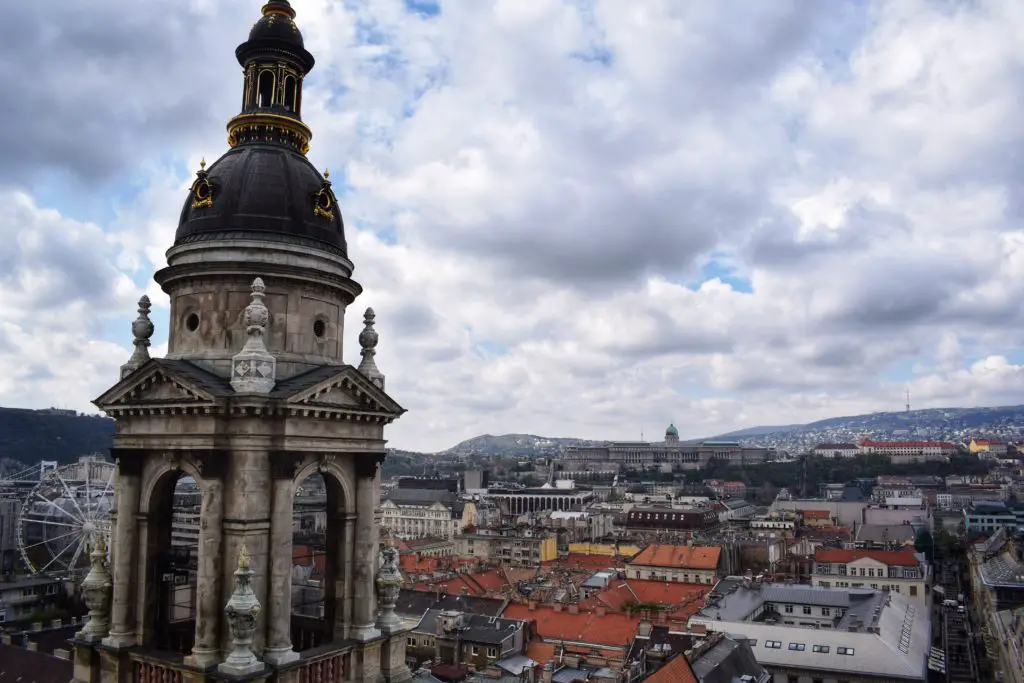
In the meantime here are some facts about Budapest.
Country: Hungary
Languages Spoken: Hungarian – although English is also widely spoken
Currency: Hungarian forint (HUF) – you can sometimes use Euro’s but we wouldn’t recommend it (more on that later)
Famous for: thermal baths, incredible architecture, ruin bars
Visit if you like: museums, quirky bars, cool buildings, fun and lively city breaks
Wondering if Budapest is worth visiting? Here is a handy guide.
How long do you need in Budapest
Out of Prague, Vienna, and Budapest, we actually Budapest is the place where you will want to spend the longest amount of time. There is just so much to see and do here and things are a little more spread out than say Prague. Ideally you want to spend a minimum of 3 days in Budapest to around 5 days. This will give you time to see the main attractions, visit the ruin bars, and explore some of the neighbourhoods.
Where to stay in Budapest
We stayed on the Pest side at the K+K Hotel Opera. The hotel was fabulous and the location was ideal. It is located on a quiet street so you are away from the hustle and bustle but within walking distance to bars and restaurants. Our room was spacious and comfortable, and it was a perfect place to rest our heads after long days exploring the city.
Here is a bot more of a breakdown on the specific areas.
District I – Buda Castle
District 1 includes the Buda Castle area. It is located on the west bank of the Danube, and is home to attractions like Fisherman’s Bastion, The Royal Palace, and Matthais Church.
It’s a more relaxed part of Budapest to stay, and there are a lot of luxury hotels in the area.
District V -Parliament & Downtown Budapest
Across the Danube from the Buda Castle area is District V, which includes attractions like the Parliament Building and St Stephens Basilica. It’s very central and close to food, drink, and most importantly public transport.
We recommend this area for first time visitors and those only doing a short stay.
There are a ton of mid-range hotel options here, as well as a number of backpackers hostels.
District VI Terézváros
This is probably your more cultural part of Budapest with points of interest such as the Hungarian State Opera House, the Liszt Ferenc Music Academy, and the Operetta Theatre.
It’s great for culture lovers and those that want to go shopping. There are a few mid- range hotels as well as some more upmarket places. It’s very central and close to transport.
District VII – Erzsebetvaros
This is the heart of the Jewish Community in Budapest especially as it is home to the Dohany street great synagogue. Separately the area is a hipster’s dream filled with super cool cafes, street food, and of course the ruin bars. If you are planning to party during your in Budapest this is probably the area for you.
Things to do in Budapest
Here are some of our favourite things to do in Budapest to help you plan your own itinerary.
St Stephen’s Basilica
St Stephen’s is a must when visiting Budapest. The interior is stunning but its the views from the top which made it for us. You get book tickets online in advance or just purchase them on the day.
Hungarian Parliament Building
One of the notable buildings that stands out as you admire the skyline in Budapest has to the the Hungarian Parliament Building. You can do a tour of the inside when the National Assembly is not in session. We decided against a tour just because of time restrictions but if you do want to do this make sure you book it in advance.
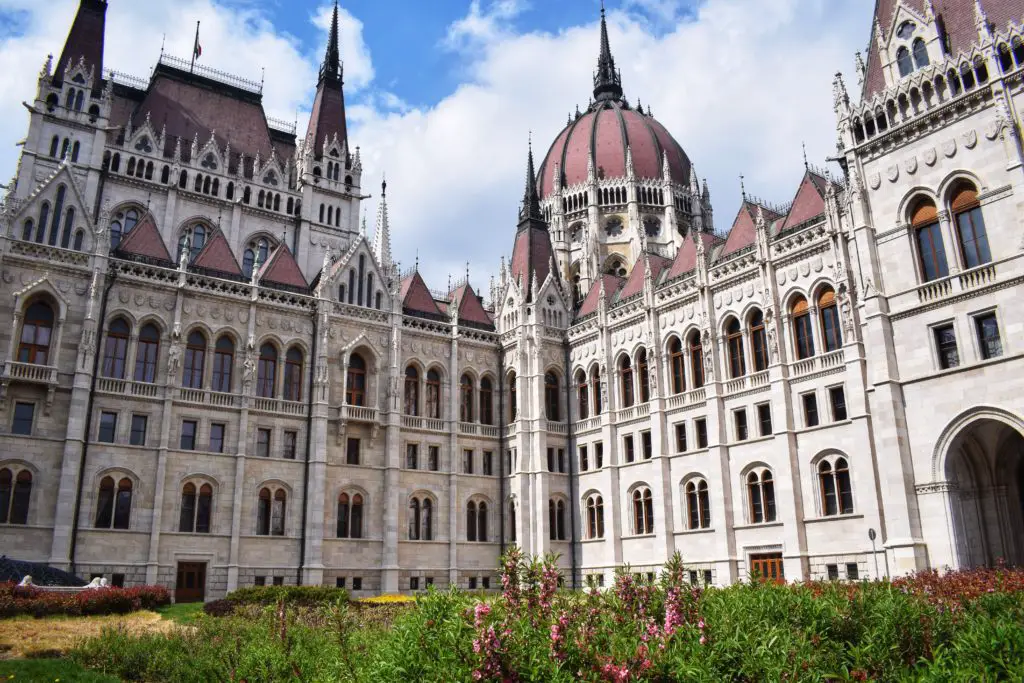
Ruin Bars
Budapest’s ruin bars are a nightlife bucket list item. You will find them in derelict buildings, filled with groups of people enjoying their nights. Szimpla Kert is the biggest and most popular and I don’t think anything we read really prepared us for actually seeing it for ourself.
Shoes on the Danube
This is one of the most moving memorials we have come across. The Shoes on the Danube represent the thousands of Jews that were killed during World War II by the Arrow Cross militia. They were marched down to the Danube and ordered to take off their shoes before being shot by the edge of the river. Their bodies then fell into the river and were carried away. What makes it even more gut wrenching is that many of the shoes were children’s.
House of Terror
The House of Terror is a museum that centres around the fascist and communist regimes in Hungary in the 20th Century. It is an important place to visit, but be prepared it is also very emotional at times. The queues can get really long here, so we recommend booking a guided tour in advance. You can purchase cheaper tickets on the day that don’t include a guide.
Szechenyi Baths
This is the biggest and most popular of all the thermal baths in Budapest. Besides enjoying the baths you can also book massage treatments and use the saunas and the gym. You probably need a good day here to enjoy the spa and the treatments on offer. You can book in advance here.
Széchenyi Chain Bridge
The Széchenyi Chain Bridge is another must visit place in Budapest and chances are you will cross it at some point during your stay. It is one of the most prominent landmarks as it connects the Buda and Pest sides of the city. It’s also quite spectacular around sunset.
Labyrinth of Buda Castle
The Labyrinth is a series of tunnels under Buda Castle. These caves once held the infamous Vlad the Impaler, otherwise known as Count Dracula as a prisoner for 14 years.
Danube Cruise
Sailing along the Danube, particularly at night is a great experience. The city lights reflect magically off the river creating a wonderful atmosphere. Day or night though, it’s a great way to get a different perspective on Budapest.
Hospital in the Rock
You essentially get the chance to explore the underground caverns of Buda Castle which were turned into a working hospital in the late 1930’s in preparation for WWII. You can only enter the caves as part of a guided tour, but this gives you the chance to learn so much about the conditions that hospital staff had to work under.
You can book a ticket online in advance here.
Fisherman’s Bastion & Matthias Church
The Fisherman’s Bastion is a stunning terrace located across the river from the Parliament Building. I think this was one of our favourite places in Budapest because of the sheer beauty of it. The terrace was actually built for the 1000th birthday of the Hungarian State, although it certainly looks much older. Nearby is the equally dramatic Matthias Church.
Hungarian National Gallery
Located in the Budapest Castle the National Gallery houses collections of all types of Hungarian art. Even the building itself is spectacular and the views from the outside are breathtaking.
Castle Hill Funicular
The funicular has been in service since 1870, so not only is it historical, but you also get some incredible views over Budapest. We highly recommend getting the funicular up to the National Gallery.
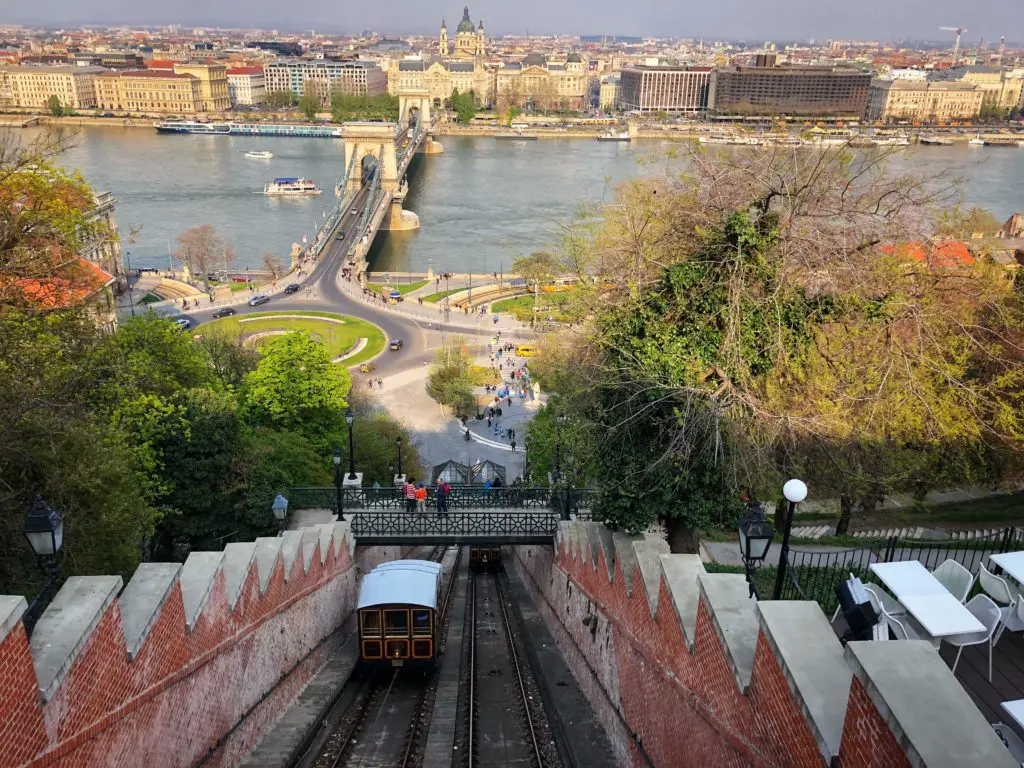
Eating and drinking in Budapest
Budapest is a great place to sample some cheap food and drink. There are several food tours you can do (see below) or you can just make your way around the city yourself.
One of our favourite places to eat is the For Sale pub. They serve traditional Hungarian food and its popular with locals and tourists. You do need to book in advance to get a table, but it really is worth it.
Budapest is home to a number of those incredible old world style cafes and the New York Cafe is the best of the lot. Make sure you book this one in advance as it does get busy. And why wouldn’t it when you can order cappuccinos with gold leaf.
Another must eat food in Budapest is of course Chimney Cake which we mentioned in our Prague section of this post. Chimney cake is actually Hungarian, and if you want to learn about the history and how to make it you can do that here.
Another recommendation for things to do in Budapest is to do a wine tour. Hungarian wine is actually really nice, considering we hadn’t tried it before our trip. This tour is a great way to learn about where the wines are made, and what to pair them with.
Getting around Budapest
Getting around Budapest is actually pretty easy, and a lot of attractions are close to each other, although chances are you will need to rely on public transport to get around.
You will need to purchase a ticket to use either the trams, buses, or the metro. There is usually a self service ticket machine at the metro station, or tram and bus stops. And they have an English option in case you were wondering.
Select your ticket type, which can be a single journey, or a 24 hour pass. You will need to validate your ticket at a metro station, or on a bus or tram
Sample Prague, Vienna, Budapest 7 day itinerary
Here is a suggested Prague, Vienna, Budapest itinerary for 7 days. This is probably the minimum amount of time you will need to explore all 3 cities.
Day 1 Prague
Arrive in Prague and visit the John Lennon Wall in the morning and then spend the day exploring the Old Town. If the weather is nice do a boat tour in the afternoon. In the evening check out some of the bars in the area – Hemmingways is a favourite for cocktails whilst the Beer Museum is a must for, well beer.
Day 2 Prague
Get up for sunrise and head to the Charles Bridge (you can always go back to sleep after – trust us it is worth it). Head to one of the traditional cafes for brunch and then spend your second day exploring the Castle area.

Day 3 Travel to Vienna
Most of day 3 will be spent travelling to Vienna. Try and get an early train to arrive in Vienna around lunch time. Explore the MuseumsQuartier and see if you can listen to some opera in the evening.
Day 4 Vienna
For something a little different head to Hundertwasserhaus in the morning, before heading back into the centre and paying a visit to St Stephens Cathedral. In the afternoon head to Prater Amusement Park and make sure you ride the Ferris Wheel!

Day 5 Travel to Budapest
Head to Schonbrunn Palace in the morning and explore, make sure you save some time for some coffee and cake before you leave Vienna.
Grab an afternoon train to Budapest so that you are ready for a full 2 days of exploring the city.
Day 6 Budapest
Grab some breakfast in one of the city’s many grand cafes, then head to the Shoes on the Danube for a moment of reflection before crossing the bridge to the funicular. Ride the funicular to the National Gallery to enjoy some art. In the afternoon head to Fisherman’s Bastion. For dinner we recommend the For Sale Pub for dinner. Spend the evening exploring some of the ruin bars before calling it a night.
Day 7 Budapest
In the morning head to St Stephen’s Basilica and admire the views from the top. Then make your way to the Hungarian Parliament building for a tour.
Head to the House of Terror in the afternoon to learn about the history of the communist regime in Hungary. In the evening, we recommend heading to the ruin bars again, to keep exploring (and drinking).

Sample Prague, Vienna, Budapest 10 day itinerary
For our Prague, Vienna, Budapest 10 day itinerary we recommend following the above 7 day guide, but adding an extra day in each city. Here are our suggestions for what to do for an additional day in Prague, Vienna, & Budapest.
Additional day in Prague
Use your additional day in Prague to explore Petrin Hill and the Jewish Museum.
Additional Day in Vienna
Use this additional day to head to the Vineyards to taste some Austrian wine.
Additional Day in Budapest
For an additional day in Budapest make some time to visit the thermal baths. we also recommend the Hospital in the Rock tour if you have the time.
Travelling between Prague, Vienna, & Budapest
The best way to travel between Prague, Vienna, & Budapest is by train. Trains are incredibly frequent and often the fastest way to travel between cities. The train from Prague to Vienna takes about 4 hours depending on whether you take an express train or not. Trains are frequent, and reasonably priced, particularly if you book well in advance.
The train journey from Vienna to Budapest is about 2.5 hours, and again if you book in advance the prices are pretty cheap. You can use booking sites like trainline.com or omio.com to book your tickets.
Best time of year to plan your Prague, Vienna, Budapest itinerary
You might be wondering when the best time to plan your Prague, Vienna, Budapest itinerary is. Honest answer – it depends on what you want to get out of your trip.
The summer months in Prague, Vienna, and Budapest are great if you want to see the cities come alive, with alfresco dining, and sip beers on the street. But summer months, particularly August tend to be the busiest for tourists. If you do visit during these months book your accommodation well in advance. Additionally if you want to eat at particular places you will need to book these in advance as well.
The best time to visit Prague, Vienna, and Budapest for us would be in either spring or autumn. Autumn is great because you get to see the leaves change colour in the cities, whilst comfort eating in the evenings to keep warm.
December is another popular time to visit the three cities, especially because they each put on a magical Christmas market. Just keep in mind that daylight hours will be much less than in summer months, and the weather will be cold.
How much money do I need for my Prague, Vienna, Budapest itinerary?
Budgeting for your Prague, Vienna, Budapest itinerary is a tough one because it will obviously depend on what you want to see and do when you get there. But here are some tips for when you visit.
Prague
Prague has a reputation for being one of the cheaper European countries, although we will say it isn’t as cheap as it once used to be. That being said, it is still better value than say Copenhagen or Oslo.
On average we budgeted around £100 or 2967 CZK per person per day and we generally didn’t spend this much. I should also add that our budget does not include accommodation. Accommodation isn’t too bad though for mid range hotels expect to pay about €60 – €120 per night.
Throughout Prague and the Czech Republic, you will need to use Czech Koruna. Banknotes are made up of the following denominations 100, 200, 500, 1000, 2000, 5000 CZK, and coins consist of 1, 2, 5, 10, 20, 50 CZK. A lot of places in Prague will accept payment by bankcard, but you do get the occasional small shop that only accepts cash. Therefore we recommend you bring even just a little bit of cash with you during your 4 days in Prague.
Vienna
Vienna is probably the most expensive of the 3 cities, but that being said it isn’t too bad.
On average you are looking at paying around €10 – €15 for a main meal in a restaurant. A pint of beer will probably set you back around €4 or €5 depending on where you are drinking.
All in all not including accommodation you should budget around €120 per day per person in Vienna. This will cover things like public transport, tourist attractions, food, and nightlife. On average a mid range hotel room will set you back around €120 a night. But this depends on location, and hotel quality.
Vienna is part of the EU and therefore the currency is Euro. One Euro is equivalent to 100 Cents. Euros are made up of a mixture of coins and notes. The coins tend to be Cents so you get 1,2,5,10,20 and 50 Cent coins, as well as a 1 and 2 Euro coin. Notes are made up of 5,10,20,50,100,200, and 500 Euros. With the notes we don’t recommend carrying around the higher denominations as some places won’t take anything over a 50 for security purposes. And honestly, I don’t think we have ever seen a 200 or 500 Euro note! So if you do find one let us know.
You can pay on card for most things in Vienna, but we do recommend carrying some cash on you. And coins are very useful especially if you need to use a public bathroom!
Budapest
Budapest is another one of those places that has the reputation of being cheap, which is it, but maybe not as cheap as we had expected. Between us we probably budgeted around €180 between us per day (not including accommodation).
This did include us going out doing tours, having breakfast, lunch and dinner out, as well as enjoying a few drinks. So you can do it way cheaper if you want.
We found that accommodation was actually on the cheaper side, with good quality 4 star hotels costing under 100 Euros a night.
The official currency in Budapest is the Hungarian Forint. You might see it abbreviated to HUF or Ft.
Some places, especially the more touristy spots may accept Euros, but we highly recommend you pay in the local currency. This is because change will be given to you in Forint even if you pay in Euros, and the conversation into Euro’s isn’t always great so chances are you will probably end up paying more. Also not all places in Budapest accept card, so this is another reason to make sure that you have some Forint on you.
The currency is one of those that has a ton of zero’s in it so just keep an eye on what notes you are getting when you are given change etc. Notes consist of 500 Ft all the way to 20,000 Ft. Although with the larger denominations you may struggle to pay for things in some shops, so if you are carrying cash try and have some smaller notes as well as the larger ones.
There are also coins such as the 200, 100, 50, 20, 10 and 5. Everything is in Forint. So for example in the US there are dollars and cents, or pounds and pence in the UK, but in Hungary everything falls under Forint
Prague, Vienna, Budapest itinerary and travel tips
- Each country has different currency so make sure you stock up on Euros for Vienna, Koruna for Prague & Forint for Budapest
- English is widely spoken in all three countries, but be sure to brush up on some basics in each language
- Book your train tickets between cities in advance for the cheapest prices.
- Book any accommodation in advance for the best deals.
- If there are particular restaurants you want to visit book these in advance as well.
Prague, Vienna, Budapest FAQs
If you are wondering how best to break up your time when visiting Prague, Vienna, and Budapest then here is a bit of a FAQ section to help you decide. We have listed some of the common questions we get asked for each destination to help you decide which one is better for your trip.
Prague, Vienna, Budapest itinerary – which one is better for families
Prague, Vienna, and Budapest each have a lot to offer if you are visiting as a family. Prague has a number of parks to visit, as does Vienna. Each city also has a number of museums to visit as a family too.
One cool thing about Vienna though is that it has the Prater Amusement Park, which is a fun way to spend the day as a family.
Prague, Vienna, Budapest itinerary – which one is better for couples
Again each city has so much to offer for couples, but if we had to choose we would go with either Vienna or Prague. They are both such romantic cities, with incredible architecture, and gorgeous cobbled streets. Vienna is great for opera, and romantic balls, whilst Prague just oozes romance even walking across the softly lit Charles Bridge.
You will have so many date night ideas in both places. There are incredible food options, trendy bars, and so much more.
Prague, Vienna, Budapest itinerary – which one is better for solo travellers
All three countries offer a lot for solo travellers. For starters they are all relatively safe cities, with so much to see and do. There are so many tours you can book onto when visiting Prague, Vienna, and Budapest so even if you are travelling alone this gives you the chance to meet new people.
Prague, Vienna, Budapest itinerary – which one is better for budget travellers
When looking at Prague, Vienna, and Budapest, we would say that Prague and Budapest are the best for budget travellers.
Prague and Budapest tend to be two of the cheaper capital cities in Europe, and you can definitely see them both on a pretty tight budget.
Vienna is a little bit more expensive, and more in line with the likes of Berlin and Hamburg in terms of expense. You can still do things cheaply, but maybe not as cheaply as Prague, and Budapest.
Prague, Vienna, Budapest itinerary – which one is better for history lovers
This is a tough one so in all honestly Prague, Vienna, and Budapest are all on par when it comes to history. The imperial cities have a little bit of everything, from royal palaces, grand churches, and so much more. This whole trip is really a history lovers dream.
Prague, Vienna, Budapest itinerary – which one is better for culture
In our opinion all three cities are perfect for culture lovers. There is so much to see and do in each of them. That being said, Vienna is the clear winner, as it has a long history of producing classical music, and operas. It’s also got some incredible museums and theatres, and let’s not forget the coffee culture that you have to indulge in.
Prague, Vienna, Budapest itinerary – which one is better for nightlife
Prague, Vienna and Budapest all have excellent options when it comes to nightlife. Vienna is full of cool clubs, and bars and there is a little something for everyone. It’s the same with Prague and Budapest.
Prague is great if you are into beer, and the city beer halls are a lot of fun. But for us Budapest really takes the cake when it comes to nightlife. The main reason is because yes there is a little something for everyone like the other cities, but the ruin bars really set it apart from the rest. They are so unique and really set Budapest apart from the rest when it comes to nightlife.
So should I plan a Prague, Vienna, Budapest itinerary?
If you are on the fence about planning your own Prague, Vienna, Budapest itinerary, take this as your sign to go. I know that there are more popular places in Europe like Paris or Rome, and yes they are beautiful, but if you want something a little different head to Prague, Vienna, & Budapest.
Hopefully this guide has inspired you to take your own trip, and please don’t forget to pin this article for later.

